Current Affairs – 4 March 2024
Protoplanetary Disk
Observations by the James Webb Space Telescope (JWST) show that a protoplanetary disk around a young star in the Orion Nebula is losing massive amounts of hydrogen each year.

About Protoplanetary Disk:
- A protoplanetary disk is a disk of gas (99% by mass) and dust (1%), orbiting a newly formed star, from which planets may eventually form or be in the process of forming.
- Disks are common by-products of star formation, and range in different mass and size.
- How are they formed?
- Stars form from cold interstellar molecular clouds. A molecular cloud is an interstellar cloud of gas and dust in which molecules can form, the most common of which is hydrogen (H2).
- As they collapse into protostars under the force of gravity, the remaining matter forms a spinning disk.
- Eventually, the star stops accreting matter, leaving the disk in orbit around it.
- The leftover gas and dust inside that protoplanetary disk become the ingredients for planet formation.
- Organic molecules present in the original molecular cloud become part of the protoplanetary disk and the planets that form from it.
- The chemical composition of the protoplanetary disk determines the composition of the eventual planets that form from it.
- Protoplanetary disks typically disperse after 2–3 million years through the coalescence of their matter into planets and photoevaporation by the stellar radiation.
Yars Missile
Russia recently announced a successful test fire of Yars intercontinental ballistic nuclear missile.
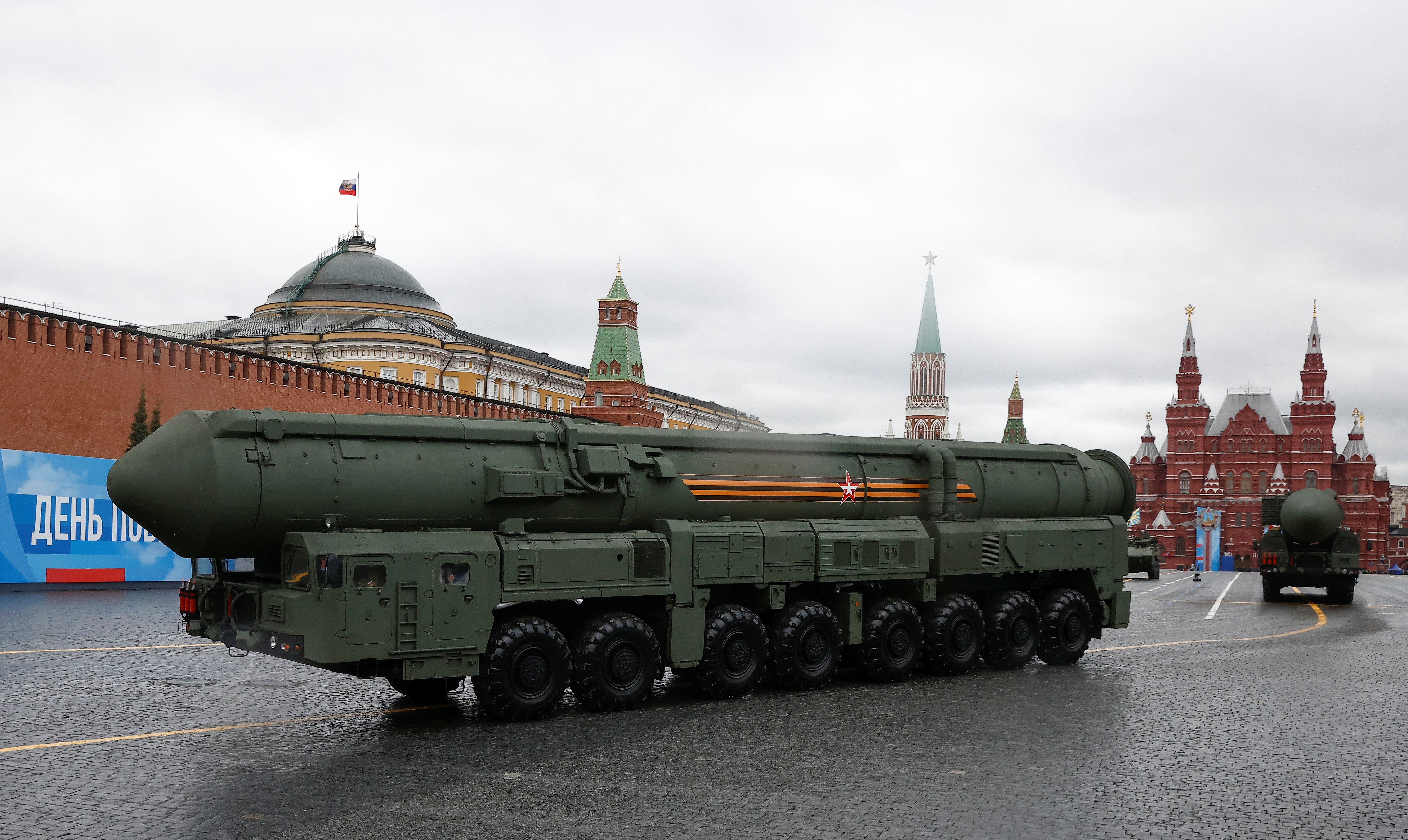
About Yars Missile:
- The Yars (also known as RS-24 or SS-29) is a Russian-made intercontinental ballistic missile (ICBM) with multiple independently targetable warheads, each capable of targeting different objectives.
- Features:
- It is a three-stage, solid propellant, MIRV-capable (Multiple Independently Targetable Reentry Vehicles) ICBM.
- The Yars is a modified version of the Topol-M missile system.
- The missile can be launched from a silo or mobile launcher.
- It has a range of 10,500 km.
- The missile can be armed with up to 10 MIRVs, each containing a thermonuclear warhead weighing 300 kilotons.
- It has the capability to manoeuvre during flight and deploy both active and passive decoys.
What is an intercontinental ballistic missile (ICBM)?
- An ICBM is a guided missile that is designed to deliver nuclear warheads, although it could also deliver other payloads.
- According to the Federation of American Scientists, ICBMs have a minimum range of 5,500 kilometres (3,400 miles), with maximum ranges varying from 7,000 to 16,000 kilometres.
- ICBMs are much faster and have a greater range than other types of ballistic missiles.
- Agni-V is an Indian ICBM with a range of over 5,000 km.
Lahore Resolution
Pakistan has decided to hold its National Day celebrations in New Delhi again this year, which is observed on March 23, the day the Lahore Resolution was adopted in 1940 by the Muslim League.

About Lahore Resolution:
- It was adopted by the All-India Muslim League during its general session in Lahore from March 22 to March 24, 1940, formally called for an independent state for India’s Muslims.
- The resolution does not include the word ‘Pakistan’ anywhere.
- The Lahore Resolution was criticised by many Indian Muslims, like Abul Kalam Azad and the Deoband ulema led by Husain Ahmad Madani, who advocated for a united India.
- What did the Resolution say?
- Geographically contiguous units are demarcated into regions which should be so constituted, with such territorial readjustments as may be necessary, that the areas in which the Muslims are numerically in a majority as in the North-Western and Eastern Zones of India, should be grouped to constitute “Independent States” in which the constituent units shall be autonomous and sovereign.”
- In other parts of India where the Mussalmans are in a minority, adequate, effective and mandatory safeguards shall be specially provided in the constitution for them and other minorities for the protection of their religious, cultural, economic, political, administrative and other rights and interests in consultation with them.”
What was the lead-up to the Lahore Resolution?
- Till the early 1930s, many Muslims had been agitating for better representation and safeguarding of their rights within the Indian Union, and the separate electorate granted to them in the Government of India Act, 1935, was a step towards that.
- The Muslim League session was held days after the Khaksar tragedy, when members of a Muslim group called the Khaksars, fighting for India’s independence, were shot at by the British on March 19 in Lahore, killing many.
OPEC+
OPEC+ members recently agreed to extend voluntary oil output cuts to boost prices following economic uncertainty.
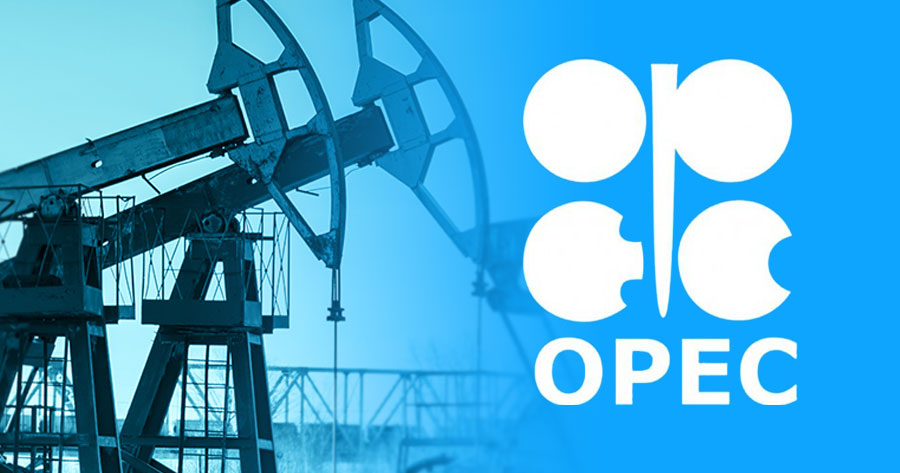
About OPEC+:
- It is a group of oil-exporting countries which meets regularly to decide how much crude oil to sell on the world market.
- Origin: These nations came to an accord towards the end of 2016 “to institutionalize a framework for cooperation between OPEC and non-OPEC producing countries on a regular and sustainable basis.”
- These nations aim to work together on adjusting crude oil production to bring stability to the oil market.
- OPEC+ controls about 40% of global oil supplies and more than 80% of proven oil reserves.
- At the core of this group are the members of OPEC (the Organization of the Oil Exporting Countries), which are mainly Middle Eastern and African countries.
- Members: It comprises OPEC countries plus Azerbaijan, Bahrain, Brunei, Kazakhstan, Russia, Mexico, Malaysia, South Sudan, Sudan, and Oman.
What is the Organization of the Petroleum Exporting Countries (OPEC)?
- It is a permanent intergovernmental organization of oil-exporting countries.
- Mission:
- To coordinate and unify the petroleum policies of its member countries.
- Ensure the stabilization of oil prices in the international oil markets
- Formation: It was founded in Baghdad, Iraq, with the signing of an agreement in September 1960 by five countries, namely the Islamic Republic of Iran, Iraq, Kuwait, Saudi Arabia, and Venezuela.
- Currently, it has 12 members, including Algeria, Congo, Equatorial Guinea, Gabon, Libya, Nigeria, and the United Arab Emirates.
- Headquarters: Vienna, Austria.
Global Resource Outlook
Global Resource Outlook 2024 was launched on the final day of the Sixth United Nations Environmental Assembly (UNEA-6) at the UNEP headquarters in Nairobi, Kenya.

About Global Resource Outlook:
- It is the flagship report of the International Resource Panel of United Nations Environment Programme.
- This year’s report sheds light on how resources are essential to the effective implementation of the Agenda 2030 and multilateral environmental agreements to tackle the triple planetary crisis.
- It brings together the best available data, modelling and assessments from 180 countries, seven world regions and four income groups, to analyse trends, impacts and distributional effects of resource use.
Highlights of the report
- It presents a stark picture of global inequality, where low-income countries consume six times less materials compared to wealthy countries, despite generating 10 times less climate impacts.
- Global production and consumption of material resources has grown more than three times over the last 50 years, growing at an average of more than 2.3 per cent a year, despite the increase being the main driver of the triple planetary crisis.
- The consumption and use of resources is largely driven by demand in upper income countries.
- The extraction and processing of material resources — including fossil fuels, minerals, non-metallic minerals and biomass — accounts for over 55 per cent of greenhouse gas (GHG) emissions and 40 per cent of particulate matter poisoning the environment.
- The extraction and processing of agricultural crops and forestry products accounts for 90 per cent of land-related biodiversity loss and water stress and a third of GHG emissions.
- The extraction and processing of fossil fuels, metals and non-metallic minerals including sand, gravel and clay account for 35 per cent of global emissions.
- Despite this, resource exploitation could increase by almost 60 per cent from 2020 levels by 2060 — from 100 to 160 billion tonnes.
Burkina Faso
Around 170 people were “executed” in attacks on three villages in northern Burkina Faso recently.

About Burkina Faso:
- It is a landlocked country in western Africa and has territories in both the Eastern and Western Hemispheres.
- Borders: It shares its borders with six other nations: Mali to the north and west, Niger to the east, and Benin to the southeast, while to the south it touches Togo, Ghana, and Ivory Coast.
- Capital: Ouagadougou
- Geography:
- It is predominantly characterized by savannahs, plateaus, and low mountains in the southwest.
- The northern region, known as the Sahel, is arid and desert-like.
- History: Burkina Faso, previously known as Upper Volta, was once part of French West Africa since 1896. It gained independence from France in 1960 and changed its name to Burkina Faso in 1984.
- Languages:
- The official language of Burkina Faso is French, which is used in government and education.
- There are many indigenous languages spoken throughout the country, with Moore (Mossi) being one of the most widely spoken.
- Economy: The economy is largely based on agriculture, which employs over 80% of the workforce. It is one of the world’s poorest countries.
- Government: It is a republic with a presidential system of government.
- By early 2023, insecurity in Burkina Faso had displaced more than 2 million people and led to significant jumps in humanitarian needs and food insecurity.
Grey Zone Warfare
The phrase ‘grey zone warfare’ crops up in descriptions of Chinese actions around an island that it claims as its own.
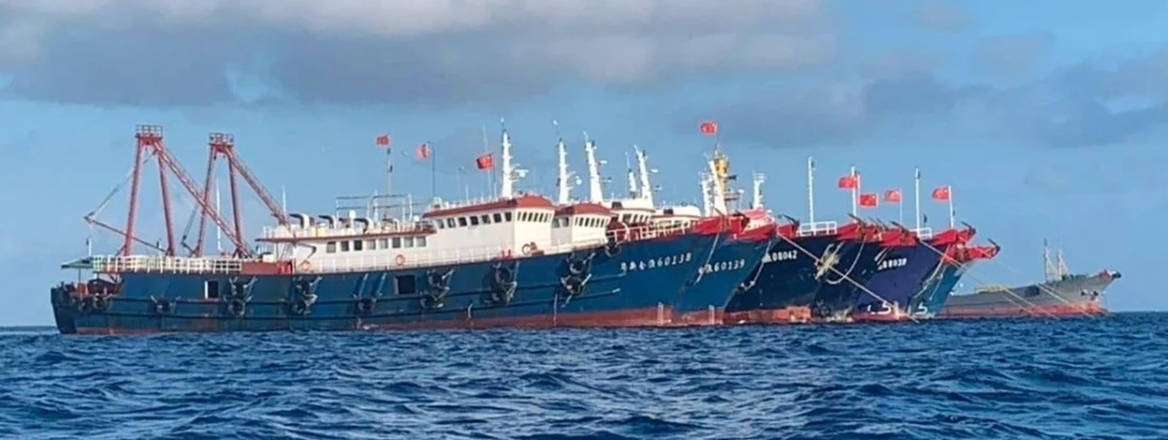
About Grey Zone Warfare:
- Grey zone warfare generally means a middle, unclear space that exists between direct conflict and peace in international relations.
- It can be broadly defined as the exploitation of operational space between peace and war to change the status quo through the use of coercive actions which remain below a threshold that, in most cases, would prompt a conventional military response.
- Activities characterised as grey zone warfare methods range from the use of proxies for kinetic action or change of territorial status quo through coercion to non-kinetic subversive actions such as cyberattacks, economic coercion, disinformation campaign, election meddling, and more recently, weaponisation of migrants.
- There are typical aspects that tend to be present in most grey zone warfare activities.
- The first is that grey zone elements remain below the threshold that would justify a military response, often through the use of non-military tools.
- The second common characteristic of grey zone activities is that they unfold gradually over time rather than involving bold, all-encompassing actions to achieve objectives in one step.
- The third characteristic, which applies to some but not all the activities in this sphere, is a lack of attributability. Most grey zone campaigns involve actions, whereby the aggressor aims for plausible deniability of its action.
- In cases where grey zone actions are open and attributable, they are justified using extensive legal and political arguments. In addition, aggressors also recruit other countries to their point of view.
- Grey zone campaigns target specific vulnerabilities in the targeted countries.
Innovations for Defence Excellence-Defence Innovation Organisation (iDEX-DIO)
The iDEX-DIO, under the aegis of Department of Defence Production, Ministry of Defence, is organising DefConnect 2024.

About Innovations for Defence Excellence-Defence Innovation Organisation:
- It is the flagship scheme of the Ministry of Defence, Govt of India launched in 2018.
- Objective: The objective of the scheme is to cultivate an innovation ecosystem in the Defence and Aerospace sector by collaborating with startups, innovators, MSMEs, incubators, and academia.
- Funding: It will be funded and managed by a ‘Defence Innovation Organization (DIO)’ which has been formed as a ‘not for profit’ company as per the Companies Act 2013 for this purpose, by the two founder memberse. Defence Public Sector Undertakings (DPSUs) – HAL & BEL.
- It functions as the executive arm of DIO, carrying out all the required activities while DIO will provide high level policy guidance to iDEX.
- It offers grants and support for R&D with significant potential for future adoption in Indian defence and aerospace.
Drugs and Magic Remedies (Objectionable Advertisements) Act, 1954
Recently, the Supreme Court has prohibited a company from disseminating advertisements that claim to treat medical conditions such as BP, diabetes, fevers, epilepsy.

About Drugs and Magic Remedies (Objectionable Advertisements) Act, 1954:
- It is a legislative framework to control the advertisement of drugs and prohibit claims of magical qualities in remedies.
- It encompasses various forms of advertisements, including written, oral, and visual mediums.
- Under the Act, the term “drug” refers to medicines intended for human or animal use, substances for diagnosis or treatment of diseases, and articles affecting the body’s functions.
- Other than articles meant for consumption, the definition for “magic remedy” under this Act also extends to talismans, mantras, and charms that allegedly possess miraculous powers for healing or influencing bodily functions.
- It prohibits advertisements that give false impressions, make false claims, or are otherwise misleading.
- The term “advertisement,” under the Act, extends to all notices, labels, wrappers, and oral announcements.
- Who comes under the Magic Remedies Act?
- The Act applies to all individuals and entities involved in the publication of advertisements, including manufacturers, distributors, and advertisers.
- If a company violates the act, individuals in charge of its business operations may also be deemed guilty unless they can prove lack of knowledge or demonstrate due diligence in preventing the offense.
- Directors, managers, or officers of the company may also be held liable if they consented to or neglected the offense.
- Punishment
- Violating the Act can result in imprisonment, fines, or both.
- If this is the first conviction for the violator, they may face up to six months in prison, fines or both.
- For subsequent conviction, imprisonment may extend to one year, fine, or both.
- The Act does not include any limits for the fines that may be imposed on individuals or organisations.
National Commission for Protection of Child Rights
The National Commission for Protection of Child Rights has sought action against an app for allegedly disseminating objectionable material targeted at children.

About National Commission for Protection of Child Rights:
- It has been constituted by the Government of India, under the Commission for Protection of Child Rights (CPCR) Act, 2005.
- Mandate: The Commission is mandated under section 13 of the CPCR Act, 2005 “to ensure that all Laws, Policies, Programmes, and Administrative Mechanisms are in consonance with the Child Rights perspective as enshrined in the Constitution of India and the UN Convention on the Rights of the Child.”
- It is also mandated to monitor the proper and effective implementation of Protection of Children from Sexual Offences (POCSO) Act, 2012; Juvenile Justice (Care and Protection of Children) Act, 2015 and Right to Free and Compulsory Education (RTE) Act, 2009.
- Composition
- A chairperson who, is a person of eminence and has done outstanding work for promoting the welfare of children
- Six members, out of which at least two are woman, from the following fields, is appointed by the Central Government from amongst person of eminence, ability, integrity, standing and experience in Education, Child health, care, welfare or child development; Juvenile justice or care of neglected or marginalized children or children with disabilities, Elimination of child labour or children in distress, Child psychology or sociology; and Laws relating to children.
- These members are appointed by the Central Government for a term of 3 years.
- Nodal Ministry: It works under the Ministry of Women and Child Development.
New GI Tagged Products
The Geographical Indications Registry in Chennai have given GI tag for Cuttack Rupa Tarakasi, Banglar muslin, Narasapur crochet lace products among others.
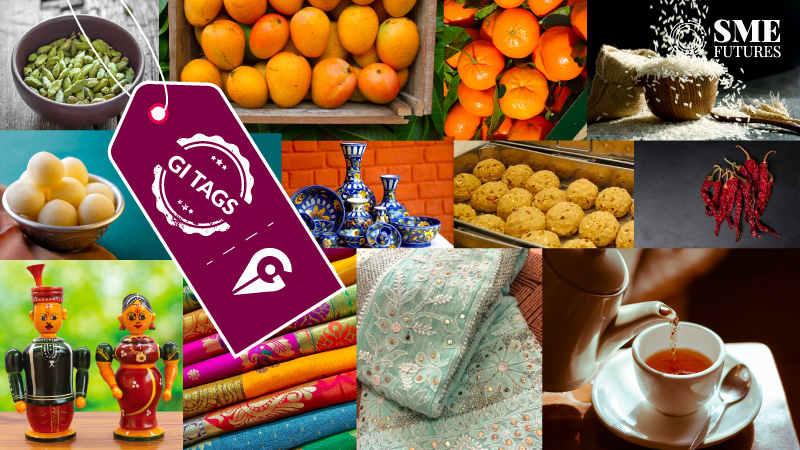
- GI tag – A form of certification that recognises unique products based on their origin.
- Characteristics – Products can be natural or man-made.
- India being a member of WTO, enacted the Geographical Indications of Goods (Registration & Protection) Act, 1999 that came into force from 2003.
The first product in India to be accorded with GI tag was Darjeeling Tea in the year 2004-05. Tamil Nadu has the highest number of GI tags in India.
| Cuttack Rupa Tarakasi – Jewellery |
|
| The Banglar muslin – Handloom Craft |
|
| Narasapur crochet lace products |
|
| Ratlam Riyawan Lahsun – Garlic variety |
|
| Ambaji White Marble |
|
| Majuli mask |
|
| Majuli Manuscript Paintings |
|
| Risa Textile |
|
Hyderabad Lac Bangles and Kutch rogan craft are the other products that got GI tag recently.
Risa Textiles
Tripura’s traditional tribal attire ‘risa’ gets Geographical Indication tag.

Geographical Indication (GI) tag is a form of certification that recognises unique products based on their origin which can be natural or man-made. India has enacted Geographical Indications of Goods (Registration & Protection) Act, 1999 for this purpose.
|
A traditional Tripuri female attire |
|
- Risa – It is common in almost all 19 indigenous tribal communities of Tripura but each community has its own design.
- Social relevance – Adolescent Tripuri girls are 1st given a risa to wear in an event called Risa Sormani, at age 12 to 14.
- It is presented as a mark of honour to distinguished recipients.
- As a turban by men during weddings and festivals, a cummerbund over the dhoti, a head scarf by young girls and boys, and a muffler during winters.
- It is also used as a makeshift hanger to hold an infant on mothers’ backs.
- Religious relevance – It is used in religious festivals such as Garia Puja by tribal communities.
- Significance of GI Tag – It would increase its international popularity and marketing potential.
Handloom remains an integral part of the Tripuri household, even with the advent of powerloom-manufactured garments.
Sarbananda Sonowal Inaugurates First Made-in-India ASTDS Tug
Sarbananda Sonowal, Union Minister of MoPSW & AYUSH, virtually inaugurated the 60T bollard pull tug named ‘Ocean Grace’ and the Medical Mobile Unit (MMU) on March 2, 2024. The Ocean Grace is the first Make-in-India ASTDS Tug developed by Cochin Shipyard Limited under MoPSW. The MMU is part of the port’s commitment to corporate social responsibility.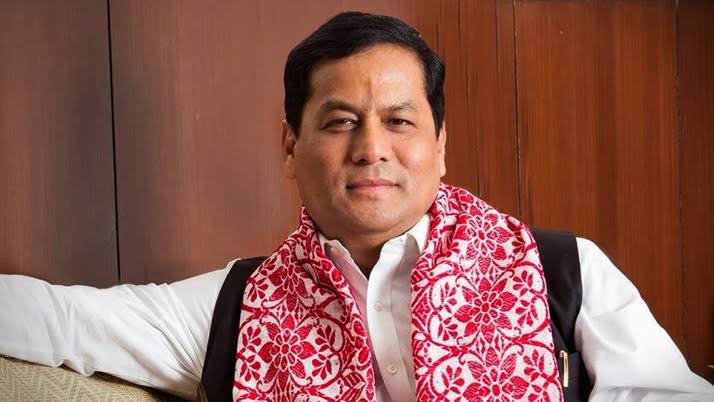
Key Highlights
1. Ocean Grace: A Milestone in Atmanirbhar Bharat
- Cochin Shipyard Limited constructed the ‘Ocean Grace’, the first Make in India ASTDS Tug, promoting self-reliant India under MoPSW.
2. Medical Mobile Unit (MMU): Enhancing Healthcare Services
- The MMU, dedicated alongside the Ocean Grace, offers a diverse range of healthcare services, underscoring the port’s dedication to community well-being.
Green Tug Transition Programme (GTTP)
1. Vision for Green Tugs by 2030
- GTTP aims to convert 50% of all tugs into Green Tugs by 2030, with major ports transitioning to eco-friendly operations.
2. Procurement of Green Tugs
- JNPA, DPA, PPA, and VoCPA will procure two brand-new green tugs from Cochin Shipyard by 2027 as part of the initial phase.
Maritime Amrit Kaal Vision 2047
1. Decarbonisation Initiatives
- Initiatives include the development and deployment of cutting-edge technology vessels, such as electric water taxis, hybrid ferries, and LNG-electric cargo carriers.
2. Sustainable Practices
- The vision encompasses the incorporation of green hydrogen and ammonia-powered vessels at major ports, demonstrating a steadfast commitment to environmental sustainability.
|
Other Important Topics |
| World Wildlife Day |
|
| Haj Suvidha App |
Union Minister for Minority Affairs has recently launched the Haj Suvidha App.
|
| Ocean Grace |
Union Minister of Ministry of Ports, Shipping, and Waterways inaugurated the 60T bollard pull tug named ‘Ocean Grace’ recently.
|
| Venice Biennale |
|
| Pancheshwar project |
|
| Vikramaditya Vedic Clock |
Prime Minister Narendra Modi recently inaugurated ‘Vikramaditya Vedic Clock’ in Madhya Pradesh’s Ujjain city.
|
| Melanochlamys droupadi |
The Zoological Survey of India named a new marine species of head-shield sea slug after President of India Droupadi Murmu.
|
| Tyler Prize |
|
| Business Continuity Plan (BCP) and Disaster Recovery Site (DRS) |
|
| Cheetah Conservation Breeding Centre |
|




